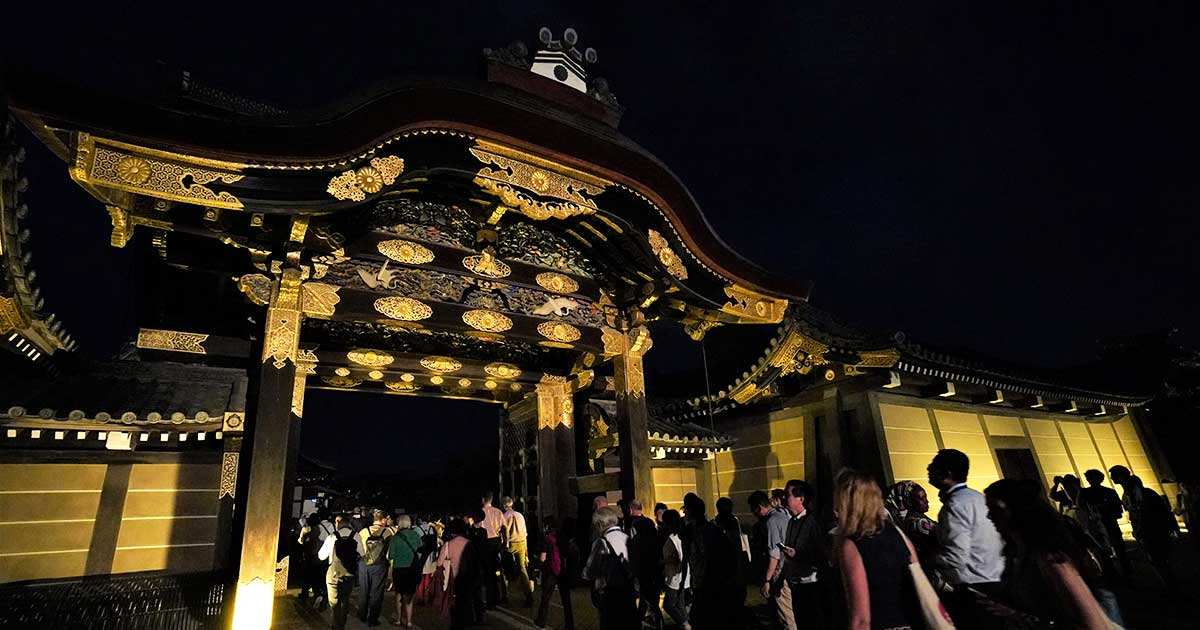Unforgettable evenings full of sublime sights, sounds, and flavors.
Host city Kyoto, Japan, set out to impress attendees of the 2019 ICOM General Conference with art, culture, and unique settings. And this was by no means an easy audience to please: more than 3,000 demanding museum professionals and enthusiasts from around the world! The members of the International Council of Museums gather every three years, and the events that Kyoto rolled out from September 1-7, 2019 generated many moments to treasure.
Kyoto, Japan's capital for centuries, has 17 UNESCO World Heritage Sites, along with countless other iconic religious sites, historic artifacts, and art treasures, as well as dynamic modern urban amenities. These attractions draw millions of tourists every year. But ICOM Kyoto 2019 treated its attendees to a program far beyond the usual visitor experience, with an unprecedented menu of spectacular and innovative social events.
Kyoto Dazzles
It all kicked off in the immaculate lakeside Japanese gardens of the Kyoto International Conference Center. This landmark architectural marvel has hosted a long list of globally important events, and now boasts the cutting-edge New Hall. The Opening Party welcomed ICOM members with cuisine showcasing Kyoto’s local ingredients, along with traditional dance performances by geisha. These elegant entertainers, known in Kyoto as geiko and maiko, embody Japan's deep understanding of the art of hospitality.
That spirit of profound yet engaging hospitality marked a whole week of social events, culminating in a Closing Party hosted at the Kyoto National Museum, home to over 200 National Treasures and Important Cultural Properties of Japan. The Museum organized a special exhibition especially for the participants in ICOM Kyoto 2019. Attendees relished exclusive Saturday night access to the exhibit "Masterworks of the Kyoto National Museum: Temple and Shrine Treasures." They were also treated to live performances as well as outstandingly delicious food and drink.
Exclusive evening access was a running theme of the social events, giving conference-goers a privileged "backstage pass" to many of Kyoto's finest sites. But the greatest highlight of all was Nijo-jo Castle in the heart of historic Kyoto. For one very special night, attendees had the stunning surroundings of this UNESCO World Heritage Site all to themselves! Conference participants sipped sake and enjoyed light refreshments in the gardens around the Ninomaru-goten Palace, where Shoguns (military leaders who ruled Japan until the mid-19th century) once entertained Emperors. There they took in a specially-staged contemporary art show, featuring work inspired by the palace location, that invited visitors to "transcend time and space to experience chance encounters with eternal moments."
Exclusive evening access was a running theme of the social events, giving conference-goers a privileged "backstage pass" to many of Kyoto's finest sites.
Also throwing open its doors to ICOM 2019 attendees was the Kyoto Botanical Garden, with after-hours tours at a conservatory where a dozen different global habitats are presented under glass across an expanse of 5,000 square meters. Not to be outdone, the Garden of Fine Arts KYOTO presented great art of the world to ICOM members, after the daytime crowds had gone, in an incredible setting designed by renowned architect Tadao Ando. At both events, participants were welcomed with complimentary light meals and beverages. The Kyoto Institute, Library and Archives joined in with behind-the-scenes evening tours that offered the knowledgeable guests a chance to see how priceless documents are stored in Japan. Other venues for night-time tours included the National Museum of Modern Art and Kyoto City Zoo.
In this way, ICOM 2019 Kyoto attendees were able to look forward to spending every evening in exciting new ways, exploring museums and watching traditional performing arts. Two nights of Nohgaku (Noh and Kyogen) performances, covering four plays, were put on especially for their pleasure—and with English commentary so that even someone with no prior knowledge of the art could appreciate the stylized stagecraft and centuries-old Japanese. Nohgaku’s costumes, music, and language have barely changed since the 14th-16th centuries, and this stunning example of UNESCO Intangible Cultural Heritage has been described as the world’s oldest living theatrical art.
ICOM 2019 attendees had a chance to enjoy an even older musical tradition at Heian Jingu Shrine, which offered live performances of Gagaku. This classical music of Kyoto’s Imperial Court showcases some of Japan’s oldest musical instruments. In the tranquil and authentic outdoor setting of the shrine's traditional garden, the audience listened intently as the unique and ancient sounds of Gagaku drifted through the night air.
Meanwhile, fans of manual dexterity made their way to Fureaikan at the Kyoto Museum of Traditional Crafts, where local artisans demonstrated various craft traditions, including candle making.
Kyoto is a unique powerhouse of heritage. Surely no other city in the world can match the quality and diversity of after-hours experiences that on this occasion dazzled some of the world’s most discerning experts.




